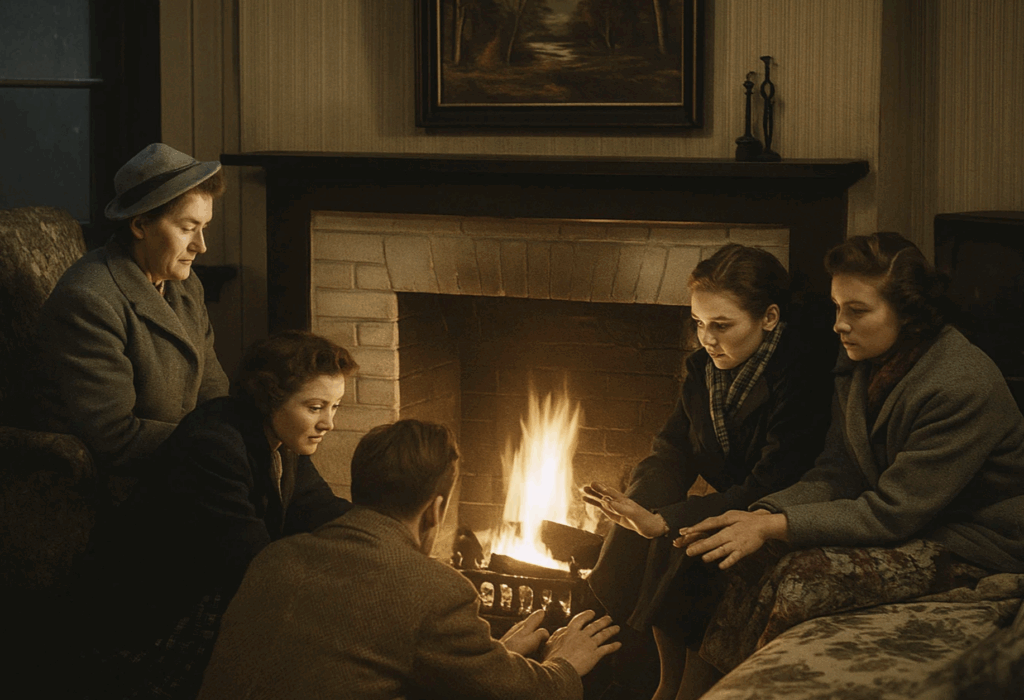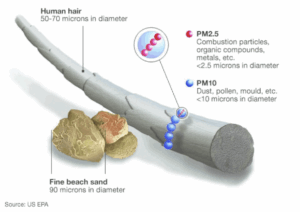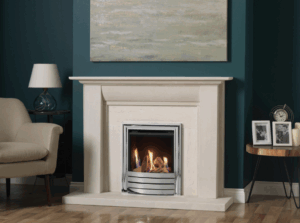On a chilly winter evening, the warm glow of a wood-burning stove has become an increasingly popular sight. More UK households are turning to wood stoves, drawn by their cosy ambience and even relief from high gas prices. Between 2021 and 2022, sales of wood-burning stoves surged by 40%, driven largely by their timeless aesthetic appeal and the desire to mitigate soaring gas and electricity prices. By 2024, over 10% of homes in England had a stove, up from 9.4% in 2022.
This boom reflects a broader trend: faced with rising fossil fuel costs and climate concerns, many see Ecodesign wood-burning stoves as a greener and self-sufficient way to heat their homes.
Yet alongside this growing popularity, a debate rages over the environmental and health impacts of domestic wood burning, mainly driven by misinformation based mostly on one vital point: failing to differentiate between the vastly different emissions that come from open fires and old stoves, and those from high-efficiency Ecodesign wood-burning stoves.

From Open Fires to Ecodesign
To understand the green credentials of wood-burning stoves, it’s important to compare three tiers of home wood heating: traditional open fireplaces, older conventional stoves, and modern Ecodesign stoves.
The differences in emissions and efficiency are stark:
Open Fires: The quintessential open fireplace, an open flame in a hearth, is by far the most polluting and least efficient way to burn wood. Much of the heat goes straight up the chimney. Government data show that an open fire produces massive amounts of smoke and particulates. In fact, industry tests indicate that modern stoves can cut particulate emissions by up to 90% compared to an open fire. Open fires also tend to vent larger amounts of noxious gases and soot because there is no mechanism to ensure complete combustion of the wood. Essentially, an open hearth gives you the crackle and charm of flames, but at the cost of producing thick smoke, both indoors and outdoors, laden with fine particles, carcinogenic polyaromatic hydrocarbons, and carbon monoxide.

Older Wood Stoves: The previous generation of wood-burning stoves, manufactured 10 or 15 years ago or more, offered improvements in efficiency over open fires but still emitted higher levels of pollution. A basic non-Ecodesign stove from the 2000s or 2010s will have a sealed door and some airflow control, meaning it burns hotter and cleaner than a fireplace, but it’s nowhere near as clean as today’s models, such as those found in our range.
Modern Ecodesign Stoves: Since January 2022, all new wood-burning stoves sold in the UK have been required to meet the Ecodesign emissions standard, a rigorous set of EU-derived criteria designed to improve air quality. Ecodesign stoves are dramatically cleaner than both open fires and older stoves. Laboratory tests conducted by the independent body Kiwa Gastec found that Ecodesign stoves produce approximately 80% less particulate pollution than traditional stoves and about 90% less than open fireplaces. These modern appliances incorporate features such as improved insulation, controlled airflow, and secondary combustion, which burns off smoke and gases that would otherwise escape, thereby minimising smoke.
The Stove Industry Alliance (SIA) states that replacing an open fire with a modern, precision-engineered stove is the key to significantly reducing the particulate emissions associated with burning wood. The latest government emissions inventory credited the switch to cleaner stoves and drier wood fuel for a 17% drop in UK domestic particulate emissions between 2020 and 2023.
A Word of Caution:
While Ecodesign stoves have incredible levels of efficiency, if misused, such as by burning unseasoned logs or allowing the fire to smoulder, even a new Ecodesign stove can generate excessive smoke and pollution.
Furthermore, a wood-burning stove is not designed for incinerating waste or scrap wood either. Burning treated or painted wood, household rubbish, or other prohibited fuels is dangerous. Chemically treated timber, such as old fence panels, pallets, or furniture, and painted/varnished wood, release toxic fumes and pollutants when burned. Similarly, plastics, printed coloured paper, plywood, MDF, and general rubbish should never be burned in a stove.
That’s why the government’s practical guidance, as well as ours, urges stove owners not to burn any of the nasties above and only burn seasoned wood (Ready to Burn) on an Ecodesign stove and to maintain their stoves and chimneys to a high standard. In optimal conditions, a modern stove can burn very cleanly: the SIA notes that efficient appliances with dry wood can reduce certain pollutant gases to near zero during steady operation. Ecodesign stoves significantly reduce emissions, provided they are used as intended. This nuance has sparked tension over how these stoves are portrayed to the public and is often the source of misinformation we aim to dispel.
Education is Key:
Technology combined with education is the solution to help dispel misinformation in the media about the green credentials of stoves. Andy Hill, chair of the SIA, says the industry has long advocated for the adoption of modern, Ecodesign-compliant stove technology as a replacement for open fires and older, outdated models as the best way to continue driving down emissions. Official data show air pollution in general is trending down: average PM2.5 levels in England have halved since 2003. Even domestic wood-smoke emissions, which rose for years, may have recently begun to fall thanks to Ecodesign stoves and low-emission fuels. The SIA points out that modern stoves burning dry wood represent only a tiny fraction, under 0.3%, of total UK particulate emissions. As a business, we have always been keen to educate our customers and potential customers on the best way to burn wood.
Our Woodtec 8kW Double Sided Wood Burning Stove:

Cleaning Up the Smoke: Policy and Practice:
The UK government’s stance in 2025 is that there is no outright prohibition on wood-burning stoves on the horizon, but regulations have steadily increased. Under the Clean Air Act framework, many urban areas are designated Smoke Control Areas where it’s illegal to emit visible smoke from a chimney. If you burn correctly seasoned wood on an Ecodesing stove, this won’t be an issue.
In these zones, households must use either an approved smokeless fuel or a DEFRA-exempt appliance. Ecodesign stoves meet the criteria to be DEFRA-exempt when paired with the right fuel, a recognition that they burn much cleaner than old models. In 2021, the government banned the sale of coal for domestic heating and restricted sales of wet wood, mandating that firewood be sold dry (moisture content under 20%) to reduce smoke.

From 1 January 2022, as noted, only Ecodesign-compliant stoves can be sold in UK markets, effectively phasing out new sales of the most polluting stoves.
Authorities have also run public information campaigns, such as Burn Better, and supported voluntary labelling schemes, for example, the Ready to Burn logo on firewood, which indicates that it is properly seasoned, and the clearSkies certification, which indicates that a stove not only meets Ecodesign but also stricter emission limits.
Around the World:
Globally, other countries mirror the UK’s mixed approach. In the United States and Canada, only EPA-certified low-emission stoves are allowed to be sold, and many cities issue temporary bans on residential wood burning during smog episodes. New Zealand and Australia have tightened air quality standards for wood-burning stoves as well, but enforcement varies, and air pollution from wood smoke remains an issue in some towns. Sweden prohibited the installation of older-design stoves in 2017, ensuring that only modern units are used going forward.
In countries with long traditions of wood heating, such as Norway, Finland, and rural parts of Europe, modern wood-burning stoves are still regarded as a valuable renewable energy source, particularly when used to replace oil or coal.
So, just how environmentally friendly is a wood-burning stove in 2025?
The honest answer: considerably more than a smoky open fire and pre-Ecodesign stoves. Modern Ecodesign stoves have made significant strides in reducing emissions. When used correctly with seasoned wood, they slash particulate pollution by around 80–90% compared to older wood-burning methods. They also deliver more heat per log, meaning fewer trees need to be felled and transported for the same warmth. In rural or off-grid settings, high-efficiency stoves can provide low-carbon heat and energy security, for example, during electrical blackouts, in ways that purely electric systems cannot. These are the reasons policymakers and environmentalists acknowledge a role for cleaner wood burning in the transition away from fossil fuels.
As of 2025, owning a modern wood stove in the UK comes with both opportunities and responsibilities. Homeowners can enjoy the comfort of a flickering fire and potentially lower carbon footprints, but they also face scrutiny to ensure they’re not unduly polluting the neighbourhood through poor burning practices. The era of tossing any old log on the fire and letting it smoulder is over; today’s stove owners are encouraged to consider the environment and how they operate their appliance, as well as its impact.











